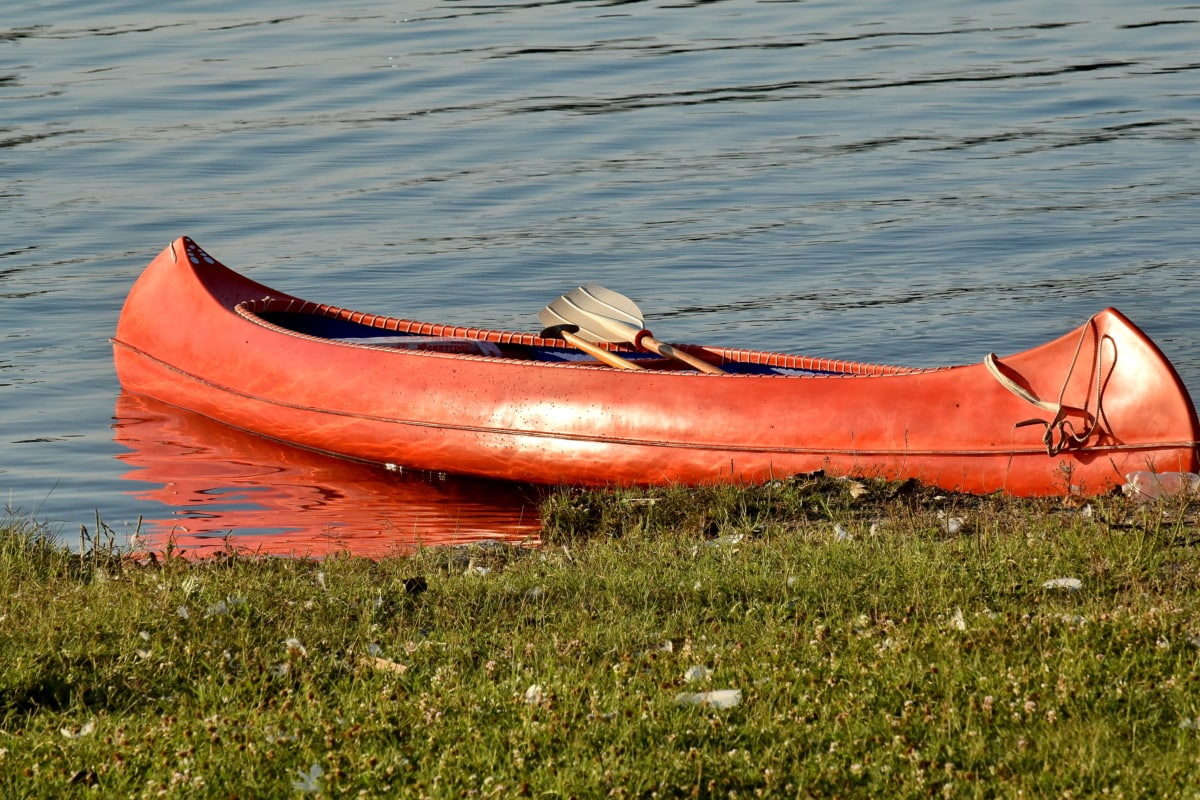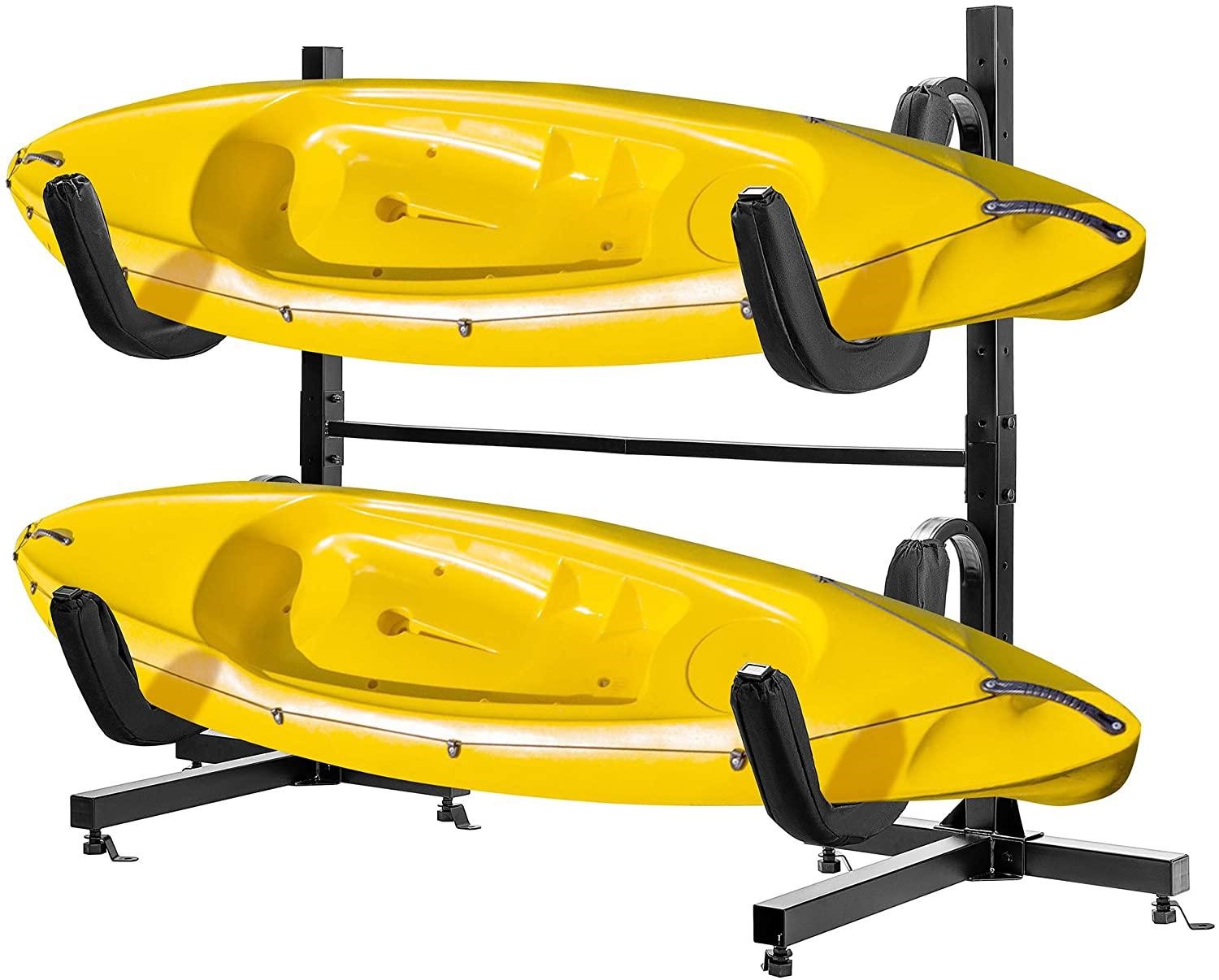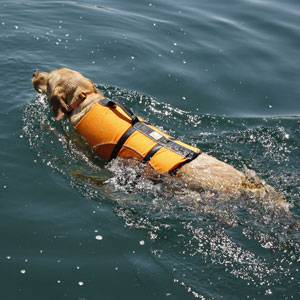While it’s common to see worn-out canoes in the yards of frequent users, you’ll have a lot more fun on the water if your canoe is in good working condition — and that starts with storing it properly but of course its easier to decide you like watersports before you think about how to store a canoe.
After all, enjoying water sports is one thing, but knowing how to store a canoe is an entirely different one. Storing your canoe somewhere in the garage or by the side of the house can age your canoe pretty quickly.

Is there a correct form of canoe storage? In fact, there is.
Your canoe should be stored upside down in a cool and dry place, supported by a few gunwale. And while there are various ways to store a canoe, the goal is the same: to ensure the boat is out of direct sunlight and UV rays, kept away from moisture, and kept off the ground. You’ll also want to store your canoe securely to prevent theft.
Here, we’ll take a closer look at the various canoe storage options and ideas. By following the recommendations below, you can prolong the lifespan of your canoe with just a few quick and easy adjustments.
Table of Contents
How to Store a Canoe: Rules to Remember
It is crucial not to place any heavy objects on your canoe when you store it to avoid possible damage.
The hull can become deformed over time if you put heavy objects on your canoe. You’ll also want to avoid storing your canoe on its side, as doing so could negatively affect its integrity.
Make sure you protect your canoe from the following environmental hazards:
- Snow and freezing conditions.
- Consistent exposure to rain.
- Ultraviolet light from the sun.
Your canoe should also not be stored anywhere near a direct heat source. Just as cold weather can damage the hull, extreme heat can also result in the same thing.
How to Store Your Canoe Paddle
Similar to canoes, paddles are susceptible to freezing temperatures, rain, excessive heat, and ultraviolet light — and what’s a canoe without good paddles?
The most effective way to store your canoe paddle is to hang them vertically using a paddle rack. You can find paddle racks in a range of sizes, shapes and materials, so you will need to figure out which one is best suited to your needs.
It’s also important to keep your paddles dry, regardless of where you store them. We also recommend wiping and cleaning the paddles after each use. This is especially crucial when you are storing your paddles for the winter season.
How to Store a Canoe the Right Way
There are a few things you need to consider when storing your canoe. These include:
- Storing it in a way that prevents damages
- Keeping it out of direct sunlight to preserve its plastic materials
- Taking adequate precautions when keeping the canoe outside
The construction material is another important consideration. If the canoe is polyethylene or composite, your storage method will be different. You will also have to take extra precautions when preparing the canoe for winter storage.
You may not need to worry about thwarts and seats much since they don’t require any special storage preparation. But if you’re storing your canoe for the offseason, you should inspect the seats. Doing so can discover any early wear and tear signs so you can make the required repairs or replace them as necessary.
Ensure that the bolts are not too tight when you store your canoe. An excessively tight bolt might result in damage, especially when storing your canoe in low temperatures. That’s because bolts are stainless steel, which becomes brittle in the cold, causing the bolts to shear.

How to Store a Canoe to Prevent Damage
Your canoe needs to be stored correctly during the offseason, particularly if you live in a climate that gets cold. Doing so helps you avoid damage to your canoe including:
- Deformation
- Discoloration
- Predation holes from animals
- Warped paddles
- Build up of moisture and mold
A lot of people believe they just have to lay their canoe on the ground upside down until it is time to use them again. Unfortunately, choosing to store your canoe in this way can damage its stern and bow tips.
The most effective ways to store your canoe and ensure it remains in shape is to:
- Suspend it in a carport or garage
- Place it on blocks
- Place it on a sawhorse
- Buy a storage rack for your canoe
The method you choose really depends on how much space you have available, your preferences, and most importantly, your budget.
How to Store a Canoe Outside
If you have to use outdoor storage, you will need to provide your watercraft protection from the elements. For this reason, you should use a waterproof cover that is sufficiently strong to keep heavy snow and rain at bay.
When using a plastic cover to protect your canoe, do not make the mistake of wrapping it tightly and preventing air circulation. Also, it is important to make sure the plastic cover does not contact the hull because moisture can become trapped between the plastic cover and your canoe. If this happens, you have a perfect breeding ground for mold that can lead to discoloration of your canoe.
Additionally, you want to avoid frequently moving the cover or tarp while the canoe is in outdoor storage. You might inadvertently cause abrasion marks on plastic hulls, and that’s not something you want. Abrasion marks can negatively affect the canoe’s maneuverability and stability, as a smoother surface moves better in the water. Storage position is extremely important here, too.
You’ll want to keep in mind that elements have a way of affecting a canoe that is stored outside compared to one that’s safely stayed indoors. Your best bet would be to store your canoe indoors if you have the space. Outside storage should be a last resort.
Bottom Line
Storing a canoe correctly is not difficult if you know what to do. These tips will help you provide the best protection to your canoe whether you use indoor or outside storage, and can prolong the lifespan of your investment.


